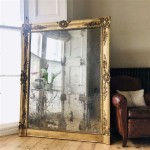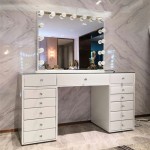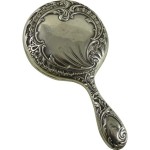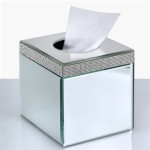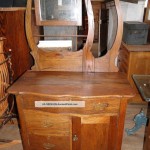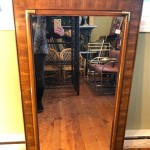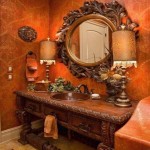How To Hang a Full-Length Mirror on a Wall Without Nails
Hanging a full-length mirror can elevate a room's aesthetic and practicality. However, many renters or homeowners prefer to avoid nail holes in their walls. Fortunately, various methods offer secure and damage-free hanging solutions for full-length mirrors.
1. Adhesive Strips
Adhesive strips designed for hanging pictures and mirrors provide a convenient and straightforward solution. These strips come in varying strengths, ensuring compatibility with different mirror weights and sizes. Before application, it's crucial to clean the wall surface thoroughly with isopropyl alcohol to remove dust, dirt, or grease. This ensures optimal adhesion. Following the manufacturer's instructions precisely is essential for successful hanging. Generally, this involves attaching the strips to the back of the mirror, then firmly pressing the mirror against the wall for the specified duration. Some strips require a waiting period before hanging the mirror, allowing the adhesive to bond fully.
Selecting the correct weight capacity for the adhesive strips is paramount. Using inadequate strength strips can lead to the mirror falling, potentially causing damage. Check the mirror's weight and choose strips rated for a slightly higher weight to provide a safety margin. It's recommended to test the strips on a small, inconspicuous area of the wall first to ensure they won't damage the paint or wallpaper upon removal. While many adhesive strips claim to be removable, testing beforehand minimizes the risk of unexpected issues.
2. Command Hooks
Command hooks offer another reliable nail-free hanging method, especially for lighter full-length mirrors. Similar to adhesive strips, it's vital to clean the wall surface thoroughly before applying the hooks. Command hooks come in various sizes and weight capacities, making it essential to choose the appropriate size for the mirror's dimensions and weight. Distributing the weight across multiple hooks can increase the overall holding capacity and provide added stability.
When using Command hooks, consider the mirror's frame or backing. Some mirrors have built-in hanging hardware that can be easily hooked onto the Command hooks. For mirrors without pre-existing hanging mechanisms, using heavy-duty wire or D-rings attached securely to the back of the mirror can create hanging points compatible with the hooks. Ensure the wire or D-rings are rated for the mirror's weight to prevent accidents. Proper placement of the hooks is also critical, considering the mirror's center of gravity and ensuring even weight distribution.
3. Leaning Mirrors
Leaning a full-length mirror against the wall offers a simple, nail-free alternative to traditional hanging methods. This approach works particularly well with mirrors designed for leaning, often featuring a sturdy frame or backing that provides stability. For added safety and to prevent the mirror from slipping, securing the mirror to the wall with specialized anti-tip furniture straps is highly recommended. These straps attach to the back of the mirror and to the wall, providing an extra layer of security against accidental tipping. This is particularly important in households with children or pets.
When leaning a mirror, consider the floor surface and the mirror's base. Uneven floors can create instability, so using shims to level the mirror might be necessary. Placing a non-slip mat beneath the mirror can also enhance stability and prevent scratches on the floor. Choose a location that minimizes the risk of accidental bumping or tipping, such as a less-trafficked area of the room. Regularly checking the mirror's stability is advisable to ensure it remains secure.
4. Wall-Mounted Mirror Stands
Wall-mounted mirror stands combine the stability of traditional hanging with the convenience of a nail-free solution. These stands typically consist of a frame or bracket that leans against the wall and supports the mirror. Some stands feature adjustable height and angle settings, allowing customization for optimal viewing. The stands themselves often utilize adhesive strips or tension rods for secure attachment to the wall, eliminating the need for nails or screws. However, it's important to check the stand's weight capacity and ensure compatibility with the mirror's dimensions.
When choosing a wall-mounted mirror stand, consider the overall aesthetic and ensure it complements the room's decor. The stand's material and finish should harmonize with the mirror and surrounding furniture. Proper assembly and installation are crucial for stability and safety. Following the manufacturer's instructions precisely ensures the stand is securely attached to the wall and adequately supports the mirror's weight. Regularly inspecting the stand for any signs of wear or damage can help prevent potential issues.

3 Simple Ways To Hang A Mirror On Wall Without Nails Wikihow

3 Simple Ways To Hang A Mirror On Wall Without Nails Wikihow

3 Simple Ways To Hang A Mirror On Wall Without Nails Wikihow

3 Simple Ways To Hang A Mirror On Wall Without Nails Wikihow
How To Hang A Mirror On Wall Without Nails Quora

How To Hang A Hanging Mirror Without Accompanying Hardware

3 Simple Ways To Hang A Mirror On Wall Without Nails Wikihow

3 Simple Ways To Hang A Mirror On Wall Without Nails Wikihow
How To Hang A 100 Pound Mirror On Drywall Quora

Gymax Full Length Over The Door Mirror Hanging Hooks Wall Mount Dressing Black Ca

